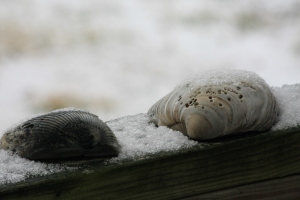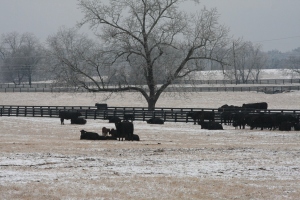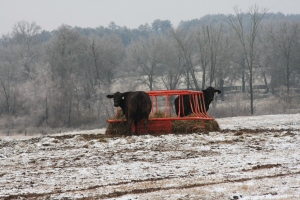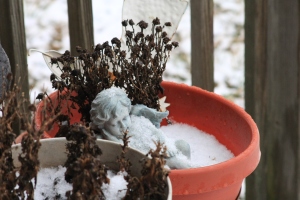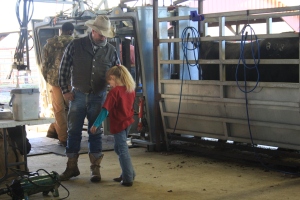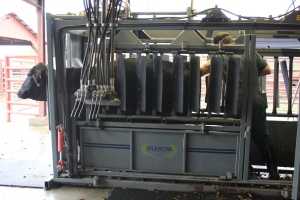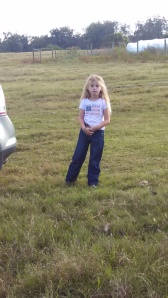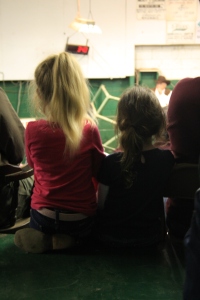So it’s been a while since I posted, we have been a little overwhelmed by the weather. I hope that you all made it through snowzilla! Atlanta is about sixty miles to the north-east from us and it was as bad as the news reported it. People laugh at southerners when it snows. But have you ever experienced snow/winter precipitation here? If not, you have no idea. Even though it doesn’t snow here we have blustery cold winters, sometimes even colder than the northern states. Our climate is very humid year round and that makes the cold even more cold. Think about the air around you being an ice-cube and that is what it is like. No most of us are not accustom to driving in the winter precipitation, be it sleet or snow. So when we have both as fast as we did a few weeks ago, it can take us hot-blooded southerners by surprise.
Our animals are also accustom to mild winter conditions. The farm the Herdsman works for produces Brangus cattle. The Brangus breed is a cross between Angus and Brahman cattle. It is a wonderful cross taking the best of both breeds. Angus are known for their intense marbling and mothering ability. The Brahman are known for their heat and disease tolerance, as well as frame size and mothering ability. We are at the end of a calving for the moment, but at the time of snowzilla we were smack dab in the middle of it. The first calf heifers did a fantastic job with placing their calves out of the wind and into the hay that had been rolled out for them. Some calves did get frost bite on their ears, but that could not be helped. With temperatures below freezing for several days in a row and wet babies being born is not a combination that any cattle producer wants. The Herdsman and the farm were glad to have everyone come through and it is a real testament to the perseverance of the cattle and the hard work the men of this farm do.
I myself had a sever dose of cabin fever! Being a stay at home mom is still new to me and although I enjoyed watching the girls have fun in the snow, it was even better to see the school bus! The rewards of being at home vs. working full-time are tremendous. The decision was made so that I could continue my education at the status of full-time. We also used my whole paycheck as a state equine inspector to pay for child care and gas to get them to and from. I am currently taking four classes online and it’s just about all I can do to keep up with my work and the kids.
The Herdsman was especially cold and ready for spring. I hope you all will take the survey that I posted in January. It will help me to post about things you want to know about. I have been thinking about doing a video post to show you what the herdsman does everyday, but I will have to play around with that. I’m also glad spring is coming because I’m planting a garden! It’s been several years since we had a garden and we love tending our crop. I think fresh is best, don’t you?
Untill next time, I hope you will enjoy sunny day’s!!!
